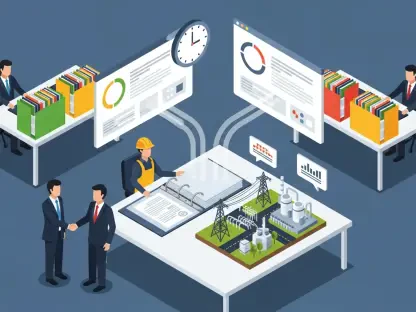In the high-stakes arena of project management, constraints are the invisible forces that can either derail a team or propel it to greatness, and understanding how to navigate them is crucial. Picture a tech startup racing to launch a groundbreaking app before a major industry event, only to find their budget slashed midway, forcing them to adapt without sacrificing quality or missing the deadline. This scenario plays out daily across industries, where mastering limitations is no longer just a skill—it’s a survival tactic. With market demands accelerating and resources tightening, understanding how to navigate these boundaries has become the defining challenge for project leaders.
Why Constraints Challenge Even Top-Performing Teams
Project constraints often lurk beneath the surface, catching even seasoned teams off guard. These unspoken boundaries—whether a rigid deadline or a capped budget—can unravel the most meticulously crafted plans if not addressed early. The core issue lies in their interconnected nature; a delay in one area, like resource allocation, can trigger a cascade of problems affecting cost and scope, leaving teams scrambling to regain control.
Many organizations underestimate the complexity of these limitations until they manifest as missed targets or stakeholder dissatisfaction. A common pitfall is assuming a robust plan alone can mitigate constraints, without factoring in real-time adaptability. As market pressures intensify, the inability to anticipate and manage these factors often separates successful deliveries from costly failures.
The Escalating Importance of Constraints in a Dynamic Landscape
In today’s fast-paced environment, the stakes surrounding project constraints have never been higher. With digital tools driving shorter cycles and global competition pushing for faster results, organizations face shrinking timelines and stricter budgets. This reality demands a sharper focus on balancing demands like sustainability mandates alongside traditional metrics, making constraint management a cornerstone of staying relevant.
Data paints a stark picture: companies that fail to address these pressures often fall behind, with delayed launches or quality compromises eroding customer trust. Beyond financial impacts, there’s a reputational cost when projects miss the mark, affecting long-term partnerships. Navigating this landscape requires not just awareness but a proactive approach to align constraints with overarching business goals.
The ripple effects extend to stakeholder expectations, which are increasingly tied to agility and precision. Whether it’s meeting a regulatory deadline or delivering a product that captures market share, the ability to manage limitations directly influences credibility. This urgency underscores why constraint mastery is a non-negotiable skill for any team aiming to thrive.
Decoding the 6 Essential Project Constraints
Modern project management extends beyond the classic trio of time, cost, and scope, encompassing a broader set of challenges. These six constraints shape every decision and outcome, requiring a comprehensive strategy to keep initiatives on track. Each factor interplays with the others, demanding careful calibration to avoid unintended consequences.
Time constraints dictate the rhythm of a project, often driven by external factors like market windows or legal deadlines. Cost limitations force tough choices, balancing investment in premium tools against financial boundaries. Scope defines the deliverables, guarding against mission creep that can inflate timelines or budgets if unchecked.
Beyond these, resource constraints highlight the need for the right skills and equipment, while quality standards ensure deliverables meet non-negotiable benchmarks, even under pressure. Lastly, risk, compliance, and strategic constraints—such as adhering to regulations or aligning with company vision—can halt progress if ignored, as seen in industries like healthcare where violating standards like HIPAA can lead to severe penalties. Together, these elements form a complex web that project leaders must navigate with precision.
Expert Voices on Navigating Project Boundaries
Constraints are more than abstract concepts; they’re real-world challenges that shape daily decisions for project managers. A veteran leader in the tech sector recently noted, “During a high-pressure software rollout, tight constraints forced a reevaluation of priorities—paring down features actually sharpened the product’s value.” This perspective aligns with research showing that companies employing structured constraint management are 30% more likely to achieve their goals.
Historical examples further illustrate the power of limitations to drive ingenuity. The Apollo 13 mission, faced with life-threatening shortages of power and oxygen, saw engineers craft solutions under extreme pressure, proving that boundaries can spark breakthroughs. Such stories highlight a universal truth: constraints often push teams toward creative problem-solving rather than stifling progress.
These insights reveal a shift in mindset—embracing constraints as catalysts rather than barriers. Industry experts emphasize that clear boundaries help focus efforts on what truly matters, eliminating wasted energy on non-essential tasks. This approach transforms potential roadblocks into frameworks for smarter execution, a lesson applicable across sectors.
7 Practical Tactics to Conquer Project Constraints
Turning constraints into manageable components requires actionable strategies tailored to today’s complex environments. These seven tactics provide a roadmap for teams to maintain control, even under intense pressure, ensuring delivery aligns with expectations. Each method focuses on practical implementation, avoiding theoretical fluff in favor of real impact.
Start by prioritizing constraints based on business impact—focus on those affecting revenue or customer satisfaction, like a delayed launch missing a critical sales window. Build adaptive workflows using modular plans that allow quick pivots when conditions shift, ensuring flexibility without chaos. Communicate trade-offs transparently, framing choices in terms of measurable outcomes, such as how a scope addition delays delivery by weeks, fostering stakeholder trust.
Leverage real-time visibility through dashboards to monitor constraints across projects, spotting budget overruns before they spiral. Automate alerts for deadlines or resource thresholds to stay proactive, freeing focus for strategic decisions. Develop contingency plans for scenarios like funding cuts, identifying which elements to adjust without compromising quality. Finally, conduct regular reviews—weekly for fast-paced initiatives—to keep constraint management aligned with evolving realities. These steps collectively empower teams to transform limitations into structured pathways for success.
Reflecting on the Journey of Constraint Mastery
Looking back, the journey through the intricacies of project constraints revealed how these boundaries shaped outcomes in profound ways. Teams that once stumbled over unseen limitations learned to harness them, turning tight budgets and rigid timelines into drivers of focus and innovation. The stories of adaptation, from tech rollouts to historic missions, underscored a timeless lesson: constraints, when understood, became powerful allies.
Moving forward, the path is clear—equip teams with tools and strategies to anticipate and manage these factors proactively. Adopting real-time tracking, fostering transparent dialogue, and prioritizing impact over perfection offer a blueprint for sustained success. As challenges evolve, so too does the resolve to view every constraint not as a barrier, but as a stepping stone toward greater achievement.









